Protecting Your Home: Understanding Placement of Downspouts
We get quite a few big rainstorms here in Cincinnati. Massive downpours with vast amounts of water pose a threat to your home. Heavy rain can cause damage to your siding, trim, foundation, and basement. You don’t want a chronically wet basement, which becomes the perfect breeding ground for mold and mildew.
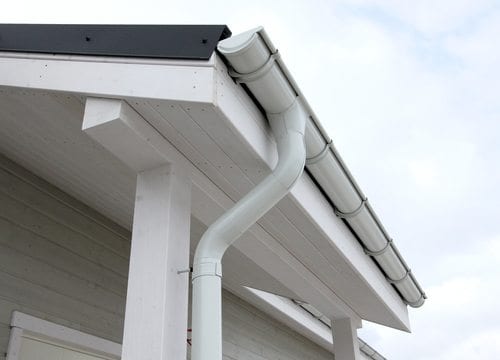
One inch of rainfall on a 1,000-square-foot roof equals over 600 gallons of draining through gutters and downspouts. That’s a significant amount of water! Many storms produce much more than a single inch of rainfall. Water is a powerful force that can wash away your foundation’s slope and damage your home.
Keeping Your Basement Dry
Homeowners may pay a lot of money and time attempting to seal their basement from water seepage. You can purchase sealing products, caulk or use foam on all the gaps, replace windows, upgrade your sump pump, and shore up your foundation’s slope. Another great option for keeping your basement dry is installing a dehumidifier.
The best solution to a seeping basement is prevention. A proper earthen slope around your foundation will cause water to run down the slope and away from your home. You can achieve a foundation slope by landscaping the earth around your foundation and making the earth higher the closer you get to the foundation and lower further out from the foundation.
Once you have created a good slope and grasses or other root systems have been established to help the slope stay in place, you’re all set, right?
Unfortunately, no. Heavy rains will still wash your slope and all your hard work away! An excellent gutter system with proper downspout placement is critical to protecting your home from heavy rainstorms.
Home Gutter Systems
A gutter system runs along the edge of your home and collects all the water running off your roof to be directed away from your home. This protects your home, trim, siding, and basement from water damage.
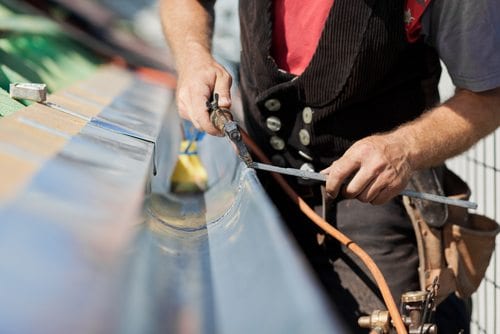
What Should the Gutter Slope Be?
According to the International Residential Codes (IRC), the minimum gutter slope code is ⅛” for every foot. In the United States, a typical rule of thumb for gutter slope is ¼” to ½” slope for every ten feet of gutter.
There is no exact set rule for gutter slope; the truth is that it will have to change depending on your geographic location and home. How much rain your area gets and the design of the building will change what slope you need as well as how many downspouts you need.
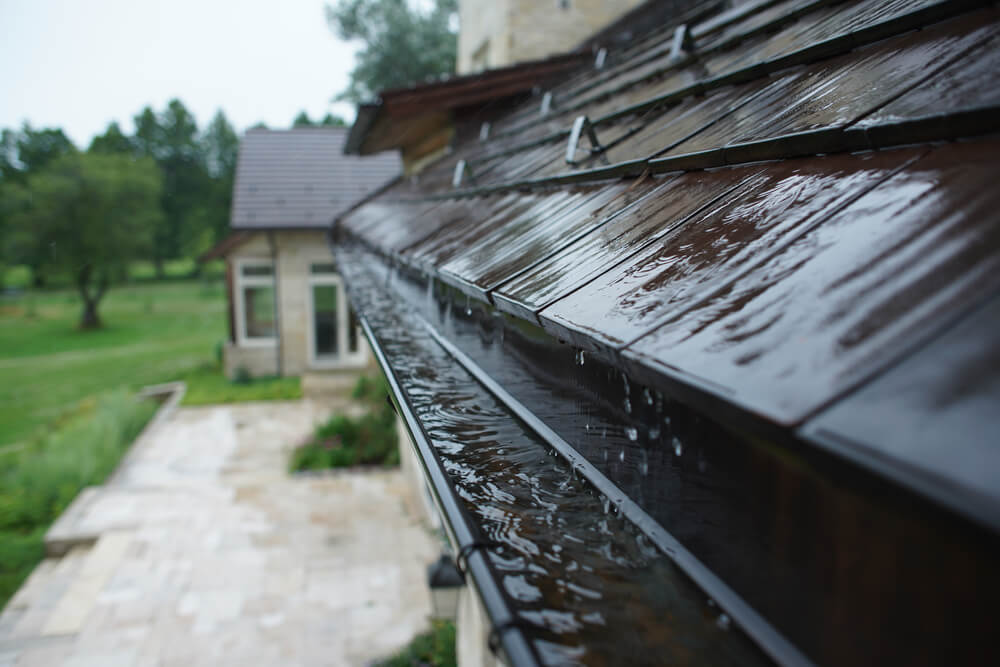
The more slope you have, the less standing water you’ll have. The less standing water you have, the fewer breeding grounds mosquitoes have. Of course, the more your gutter slopes, the funnier it looks on your home. Additionally, if it slopes too much, it will get too far away from your roof to properly catch all the rain rushing off the edge.
What’s the best way to address your gutter slope? Adding downspouts lets you keep your slope minimal without getting too far from the roof.
Downspout Spacing
Gutters and downspouts are typically not a building code requirement or law. However, they are essential to your home’s longevity and are recommended standard practice additions.
Many homeowners want to know where to place downspouts on their homes. Every building and home is different, so placing downspouts can be tricky. A good rule of thumb for downspout spacing is at least every 30 to 40 feet. If you want to play it safe or get a lot of torrential rain, err on the side of caution and install downspouts every 25 feet. If you have a run of gutters longer than 40 feet, place a downspout in the middle and slope it towards the nearest downspout.
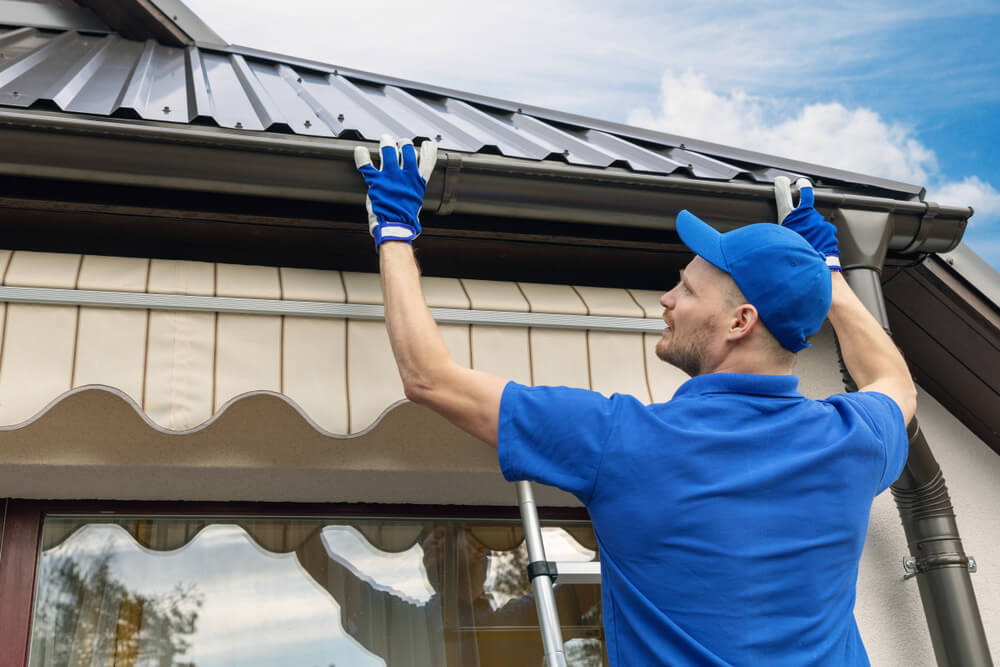
A great downspout location is placing your downspouts along the side of the house, near the corners of the home. This allows them to blend into the building more while funneling water away from the home.
Downspouts should not discharge water that might pool close to the house or foundation. For example, you wouldn’t want one discharging into a closed-in flowerbed. If the spacing of your downspouts requires one near your closed-in flowerbed, consider burying an extension or pipe under the flowerbed and funneling the water away.
Downspout Extensions
The purpose of a downspout is to remove the water from the gutters and safely deposit it away from your home.
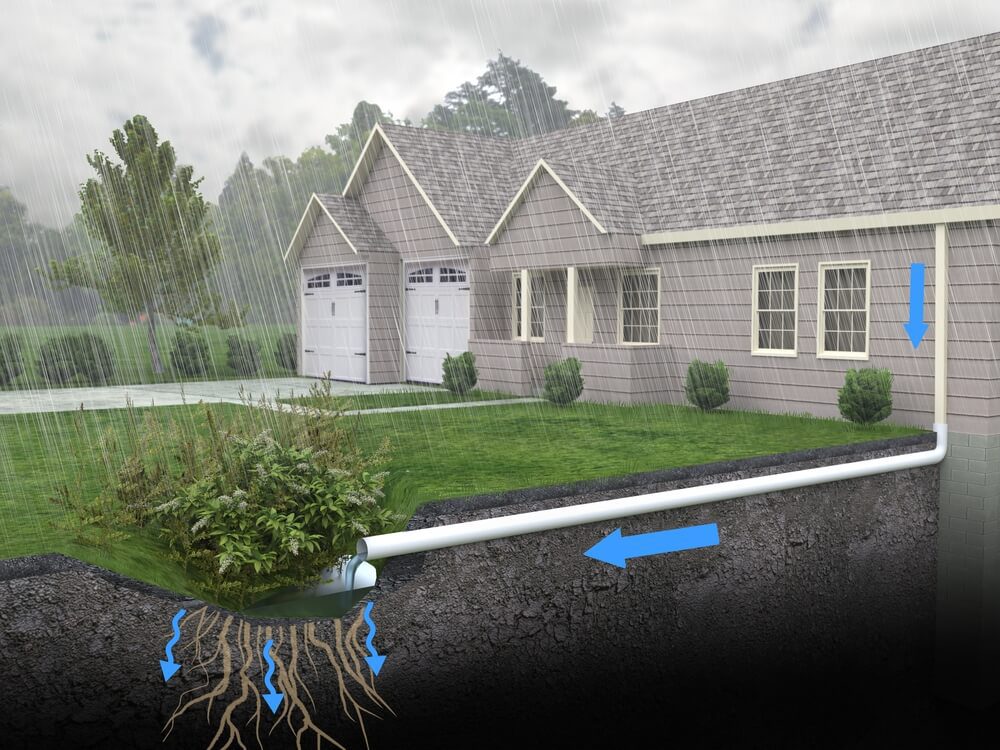
You may wonder how far away from the house gutters should drain. You will need to install a downspout extension to achieve a ten-foot distance from your home. Ten feet is the minimum downspout routing distance recommended to protect your home from water leakage. This extension connects to the bottom of your downspout, routing the water away from your home and towards proper drainage. This prevents the water from pooling around your foundation, leaking into your basement or crawlspace, or eroding the earth around your foundation.
A downspout extension is made of the same material as the gutters or can be a plastic polymer corrugated hose. These extensions can be run to the nearest municipal storm drain (if local laws permit) or into a gravel water well.
For more advice on the proper placement of downspouts to prevent basement seepage, contact Apollo Home Heating, Cooling, Electrical and Plumbing.
